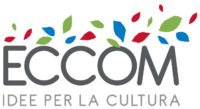The process of appreciating the value of cultural heritage involves:
- the type of value: use, non-use, existence, bequest and option; economic and noneconomic, market and non-market, tangible and intangible, etc.;
- The subject that carries out the assessment: individuals (users-non-proprietors, usersproprietors, proprietors-non-users, non-users and non-proprietors) or groups (informal communities, networks, associations and foundations, etc.); this subject will reason in terms of utility against costs; this reasoning will in turn be influenced by factors such as belonging to majority or minority groups, the census, age, gender, religion, etc.; finally, this subject can be represented by political decision makers; none of these subjects, however, constitute uniform and univocal blocks;
- the objective for which value is estimated, which can be within heritage (protection, safeguarding of community identity, etc.) or external to it (employment, social cohesion and inclusion, local economic development, etc.). There are four aspects of the value of heritage and its tangible and intangible elements, which, from the perspective of “interculture”, are useful to remember:
- objective ability, by its nature and specific conditions here and now, to satisfy a certain number of needs expressed by one or more subjects;
- those with needs capable of being satisfied;
- perception of value, both individual and social;
- measurement, reporting and social communication of value.
